“His Majesty the King of Portugal for the Very Holy Sepulchre of Our Lord” (Register of the Condotte)
The Portuguese princes, as shown by their numerous gifts to the Franciscans of the Custody, were no exception to the rule that every Catholic sovereign had a particular relationship with the land of Christ. Portugal, the history of which has been closely linked with that of the Holy Land since the time of the first Crusades, has offered prestigious gifts to the guardians of the Holy Places, who have kept them preciously despite the passing of the centuries.
The most impressive gifts from Portugal were mostly offered in the 17th and 18th centuries, These works show a particular interest for liturgical objects used in very specific contexts, due to the luxurious vestments, as well as gifts showing an originality which show off the artistic and cultural specificities of the kingdom’s spirit.
Amongst these gifts, two monumental examples are almost unique amongst the offerings of liturgical objects by the Catholic princes: a huge silver basin with the coat-of-arms of His Majesty the King of Portugal, as well as two majestic wooden fifteen-branch candelabras.
What do these objects have in common? Their very particular liturgical use. The basin that Prince Pedro of Portugal offered in 1675 is only used once a year, on Holy Thursday, for the ritual of washing the feet. As for the candelabras – the monumentality and the rococo decoration of which are exceptional – they were only used on the last three days of Holy Week, during the Offices of the Tenebrae, now fallen into disuse. In both cases, they were objects used during extraordinary liturgical ceremonies of the Latin Catholic rite, dear to the Kingdom of Portugal.
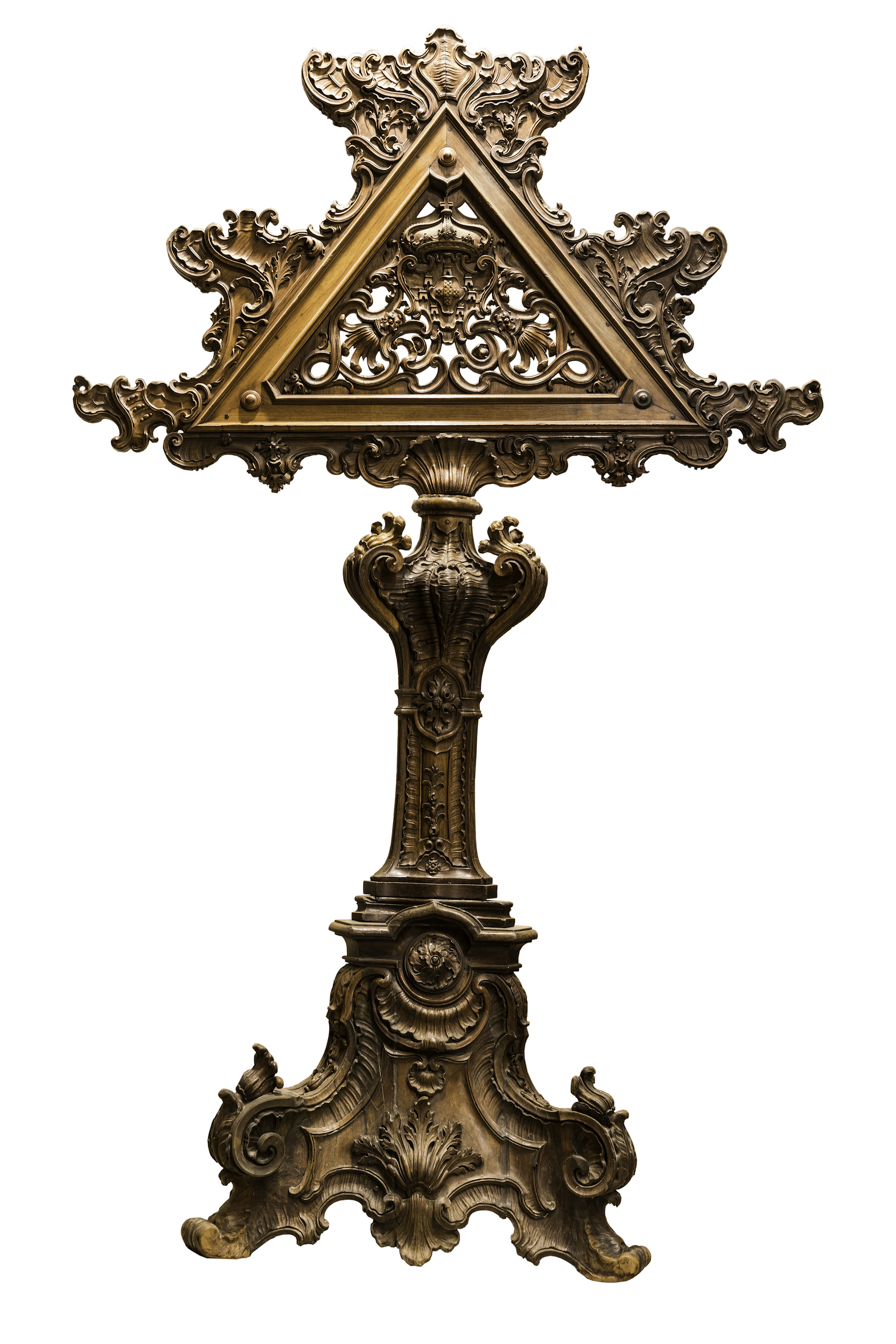
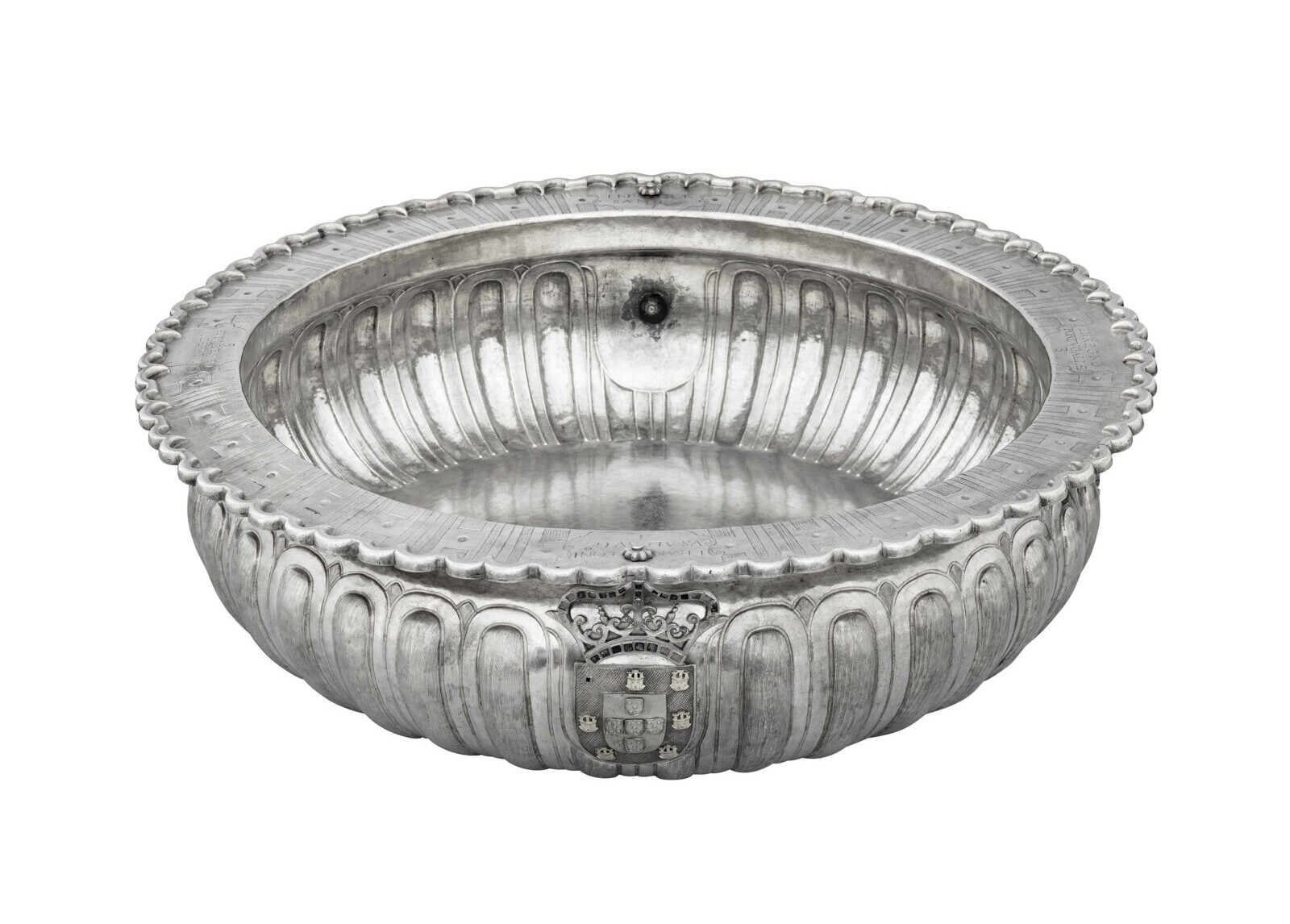
Vestments are also part of the gifts for which Portugal was particularly illustrated. The Portuguese’s wish to be patrons of the Franciscans can be seen in particular through three remarkable examples.
The first, dating from the start of the 18th century, is an ornament in crimson carved pile, decorated with palms and other plant motifs, the richness of which flaunts the economic prosperity of the donating country and its King, John V. The Portuguese coat-of-arms can be seen on the back of the cope and also recall the origin of these precious vestments.
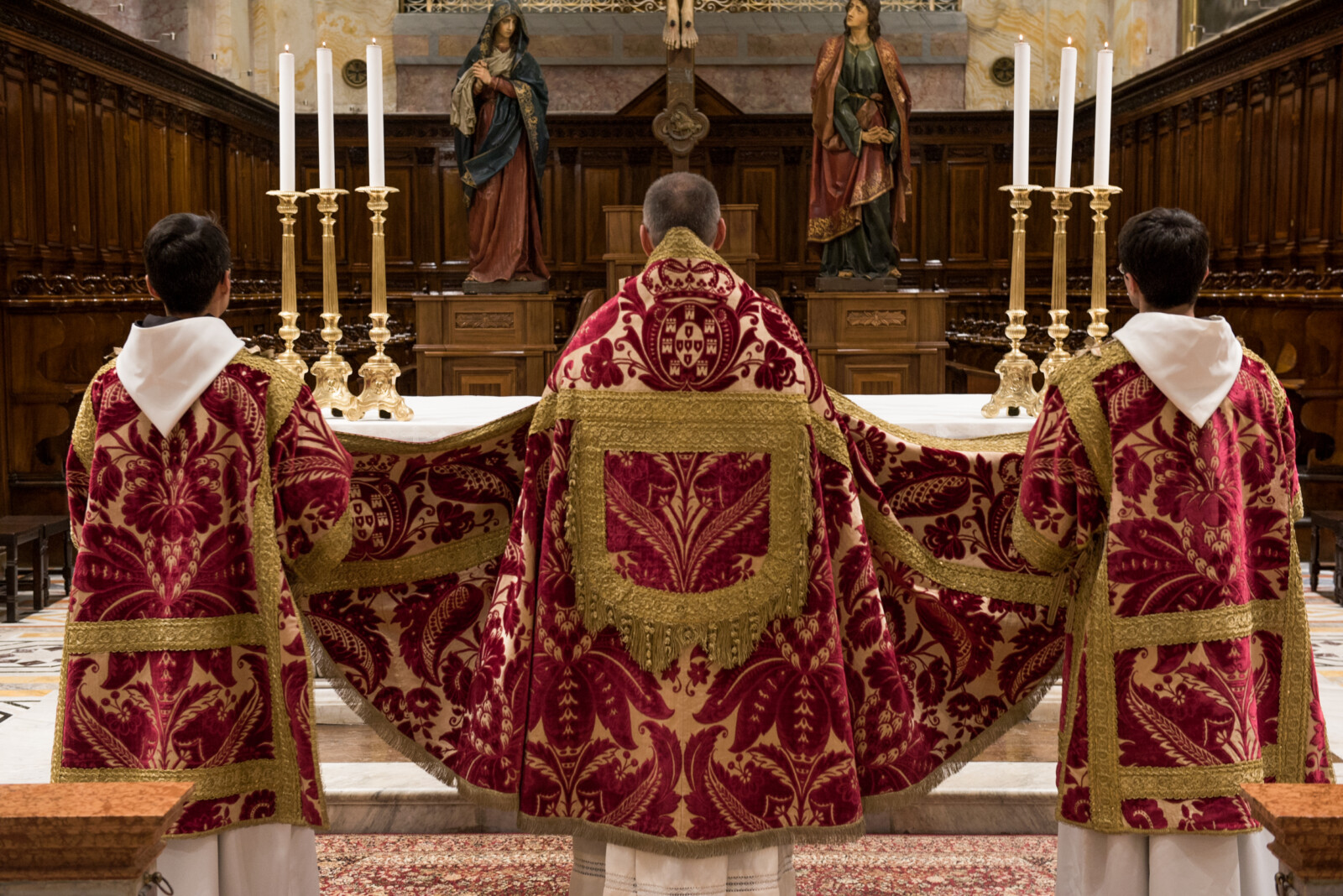
We can also mention a complete set of black vestments, used for funerals, of which the luxury remains visible but without reaching an exuberance that would not have been suitable in this type of ceremony. Lastly, the rich white vestments offered by Ferdinand VI of Spain is also a fine example of the influence of the Portuguese nation. The coat-of-arms of the country which has Lisbon as its capital can be seen next to that of Spain, due to the marriage of the king to Barbara of Portugal.
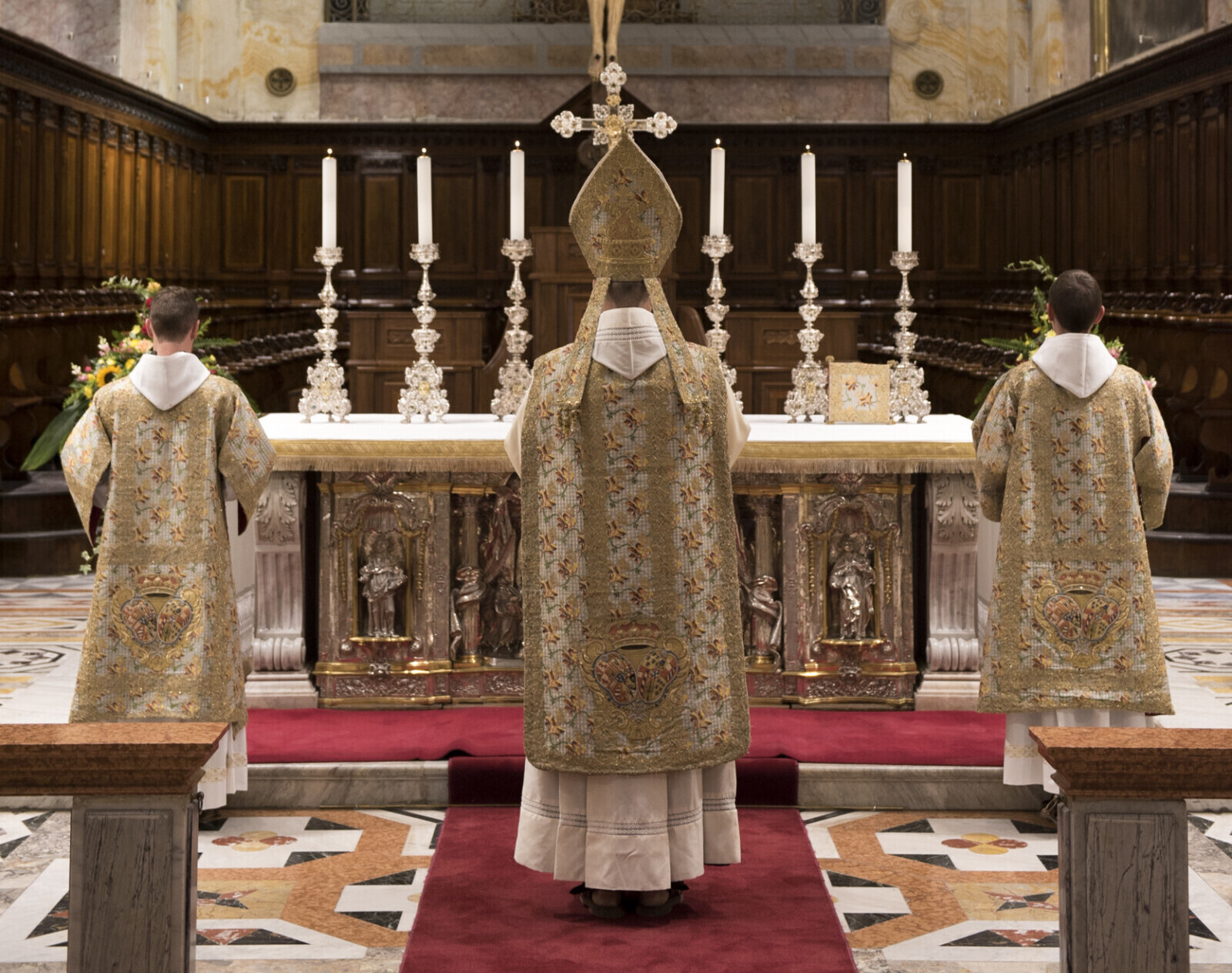
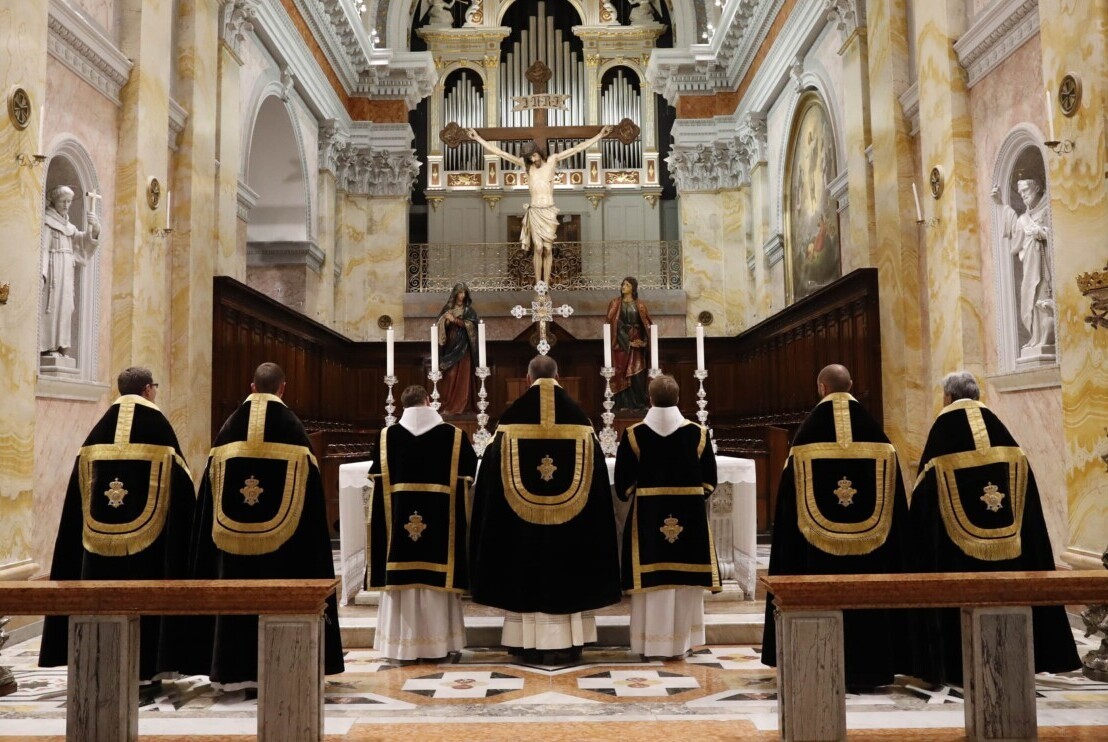
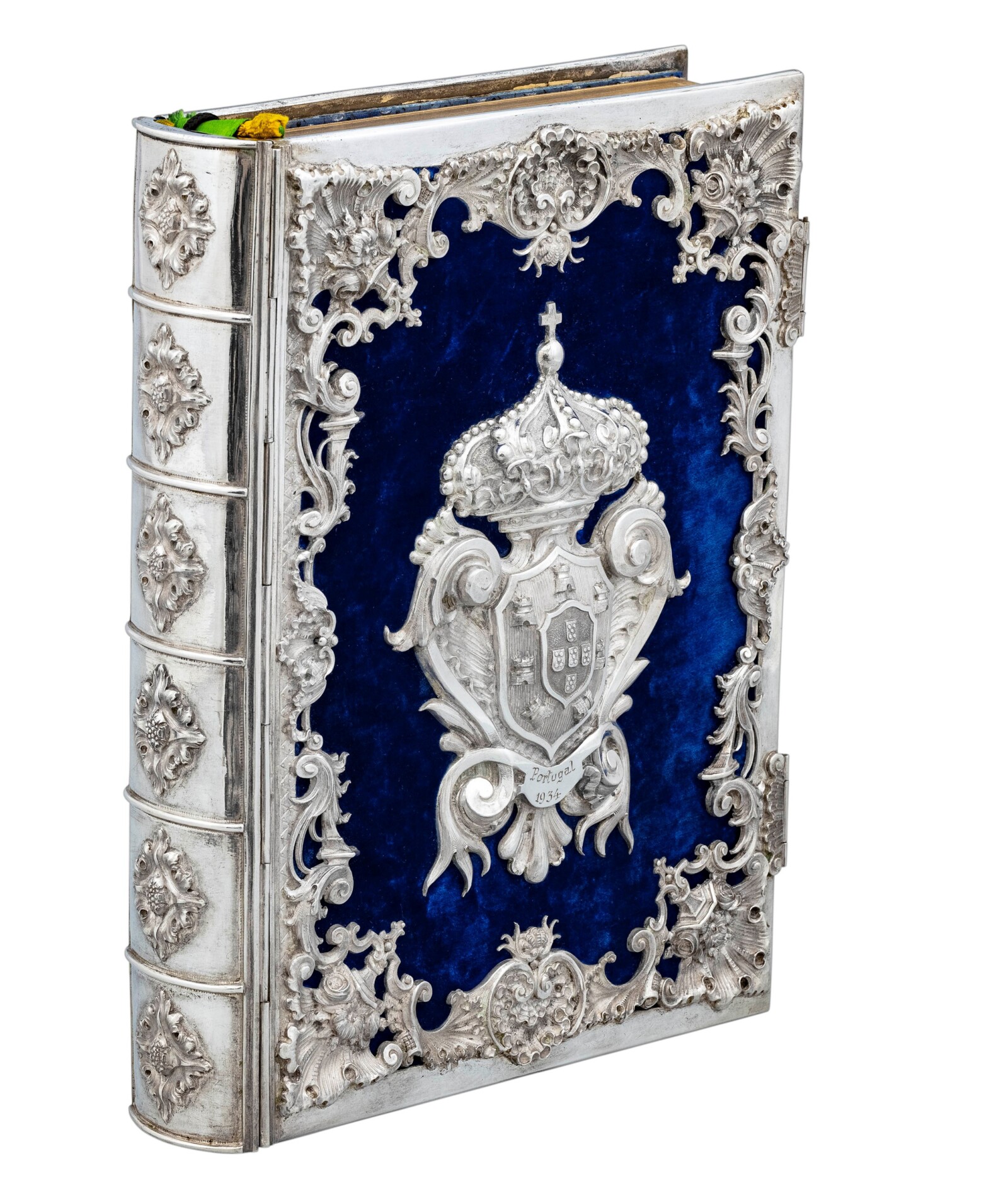
The splendour of these sumptuous objects at times raises them to the rank of real treasures. This is the case for example of the solid silver and velvet gospel book that D. Duarte Nuno, Duke of Braganza, claimant to the defunct Portuguese throne, offered the Custody in 1934. This virtuous work, which puts the Portuguese royal coat-of-arms at the centre in an extreme and inscribed rococo style, once again shows the attachment of these sovereigns to the liturgy despite the passing of the centuries.
Remarkable objects of marquetry – a portable altar and a wooden bookrest – were offered by Portugal in the 18th century. These two objects combine a practical side, as they can be used when travelling and allow celebrating Mass anywhere, as well as an aesthetic side, which can be seen by the care and technique that went into these two objects.
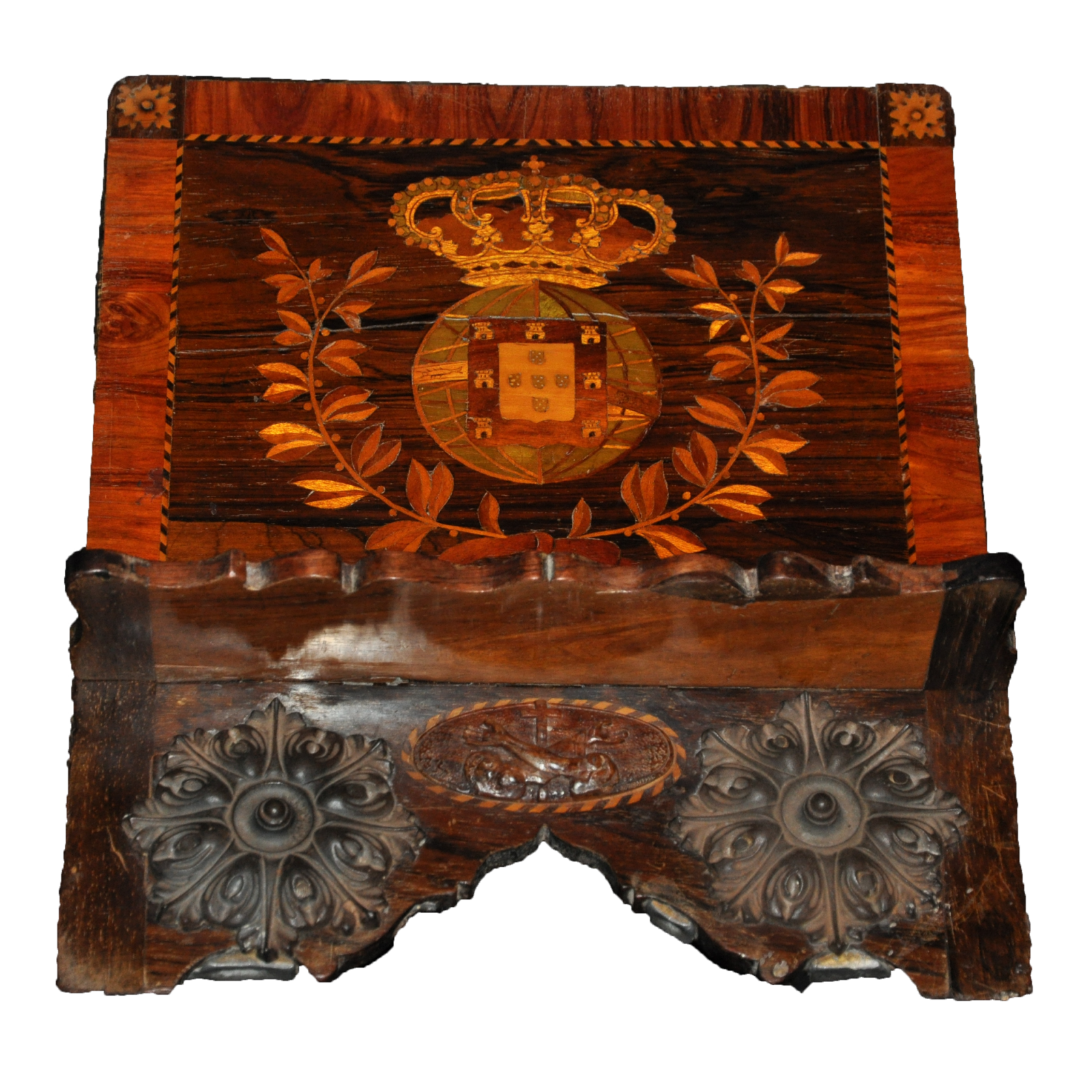
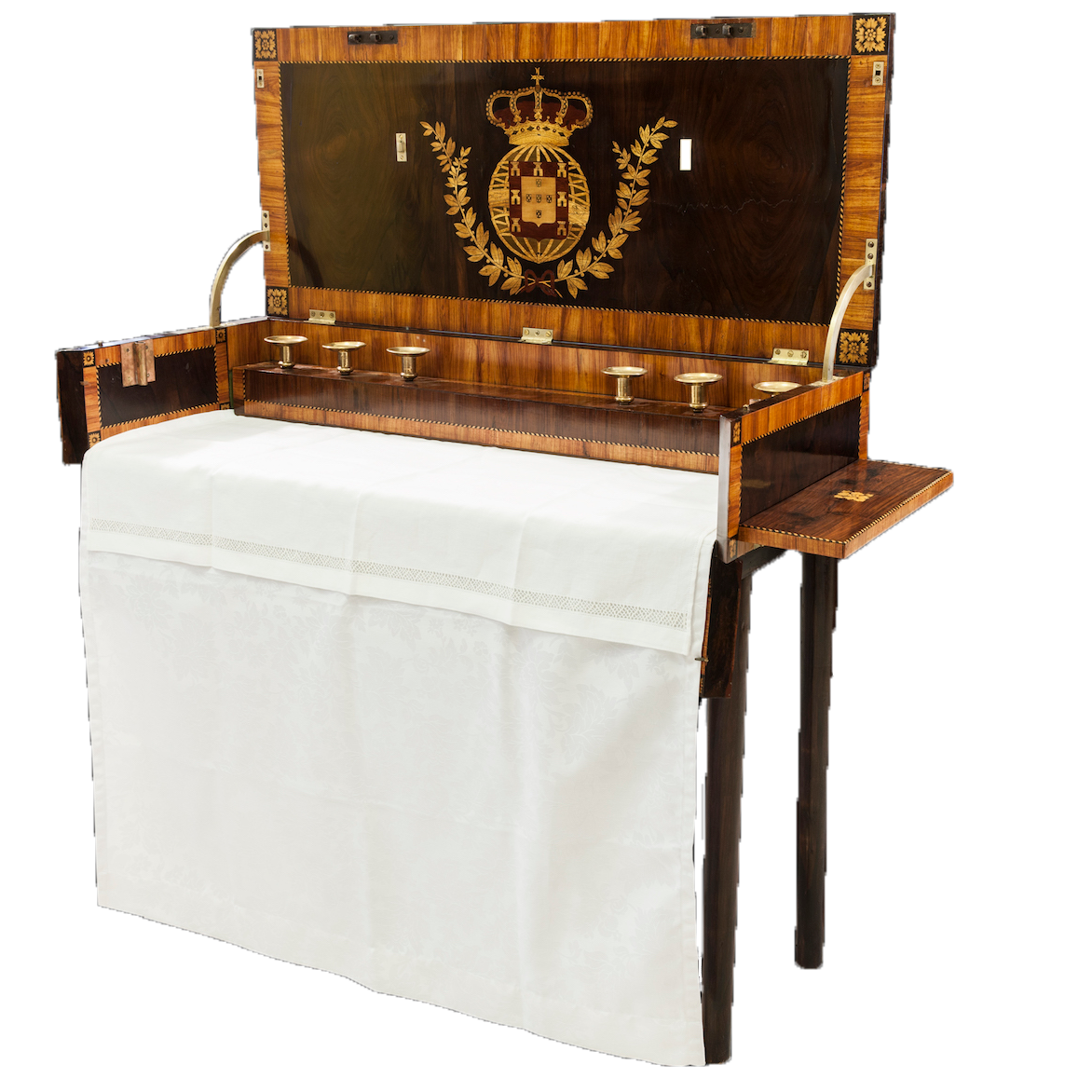
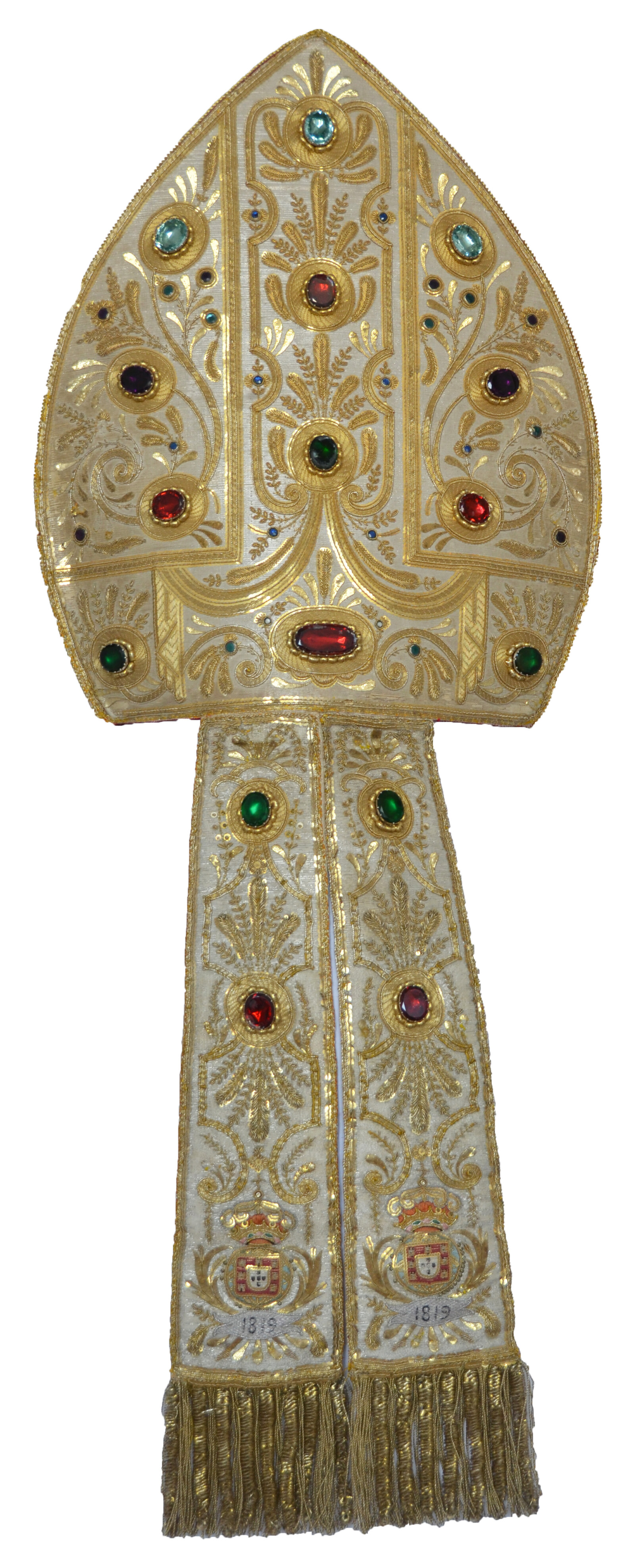
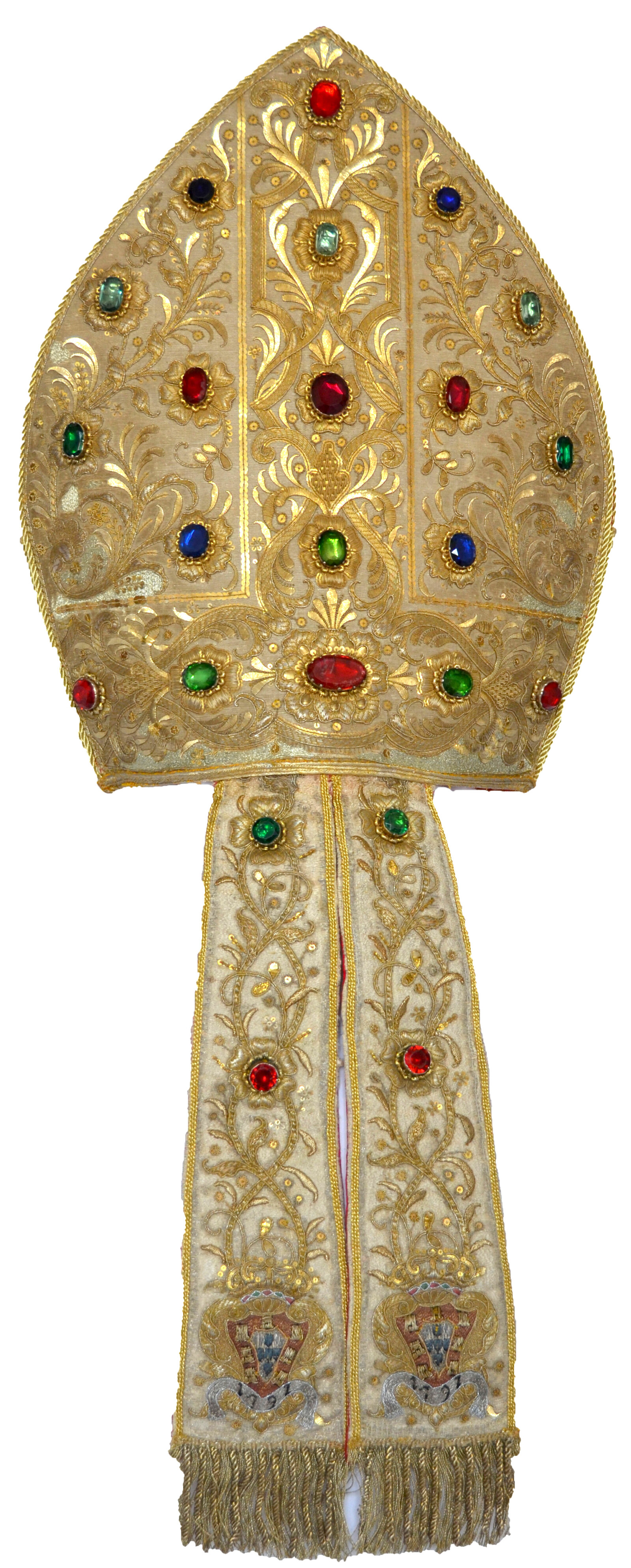
Portuguese splendour is found again in the two episcopal mitres made from silver and embroidery offered by Maria I of Portugal, known as “Maria the Pious,” for the solemn festivities of 1792. The richness of these head-dresses. used only for some solemn ceremonies, makes them very rare pieces of work. On their silver background, precious stones set in canvas give an effect of royal luxury for the offices.
All these objects have, apart from their origin, in common that they are almost all still used by the Franciscans of the Custody. The Friars are the guardians of traditions that are centuries old and this way they respect the wishes of the Portuguese princes to make their country shine through the lavish Latin ceremonies of the East.
(Translated from french by Joan Rundo)



